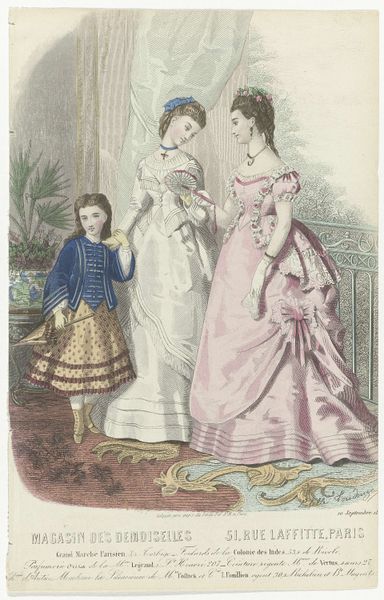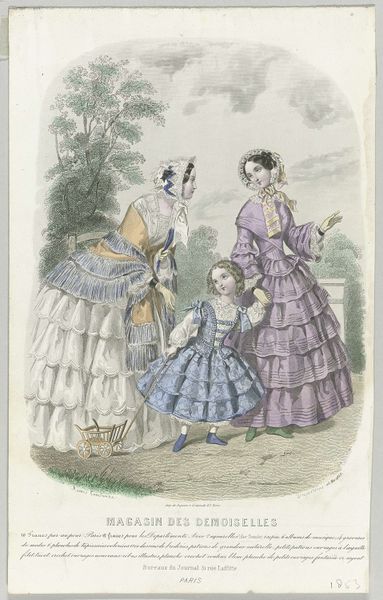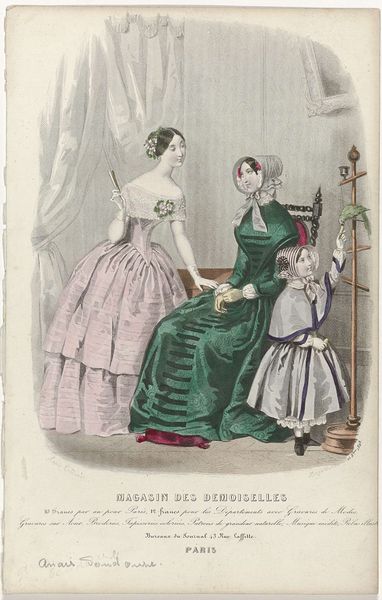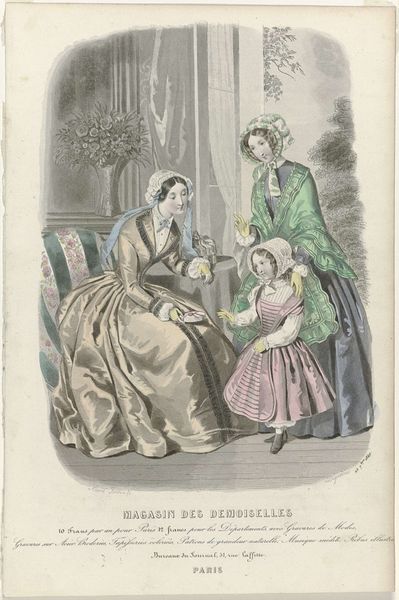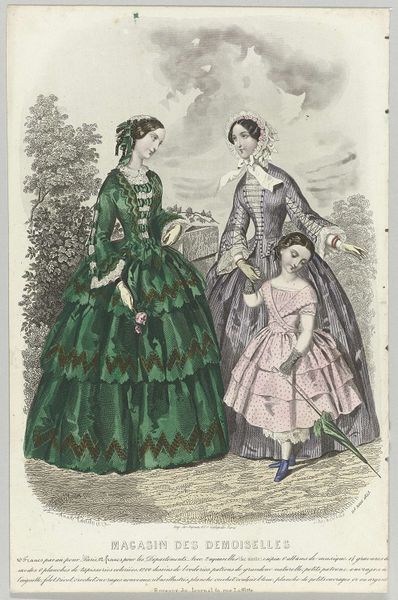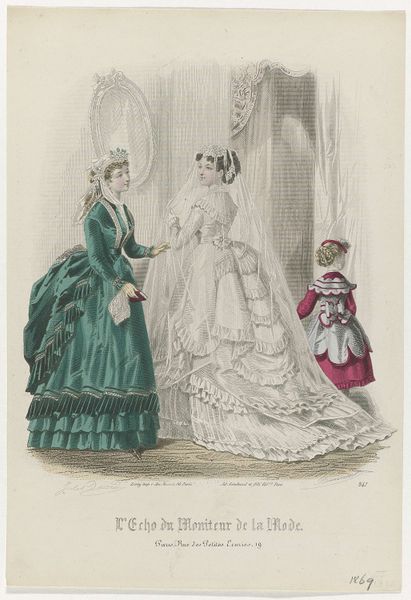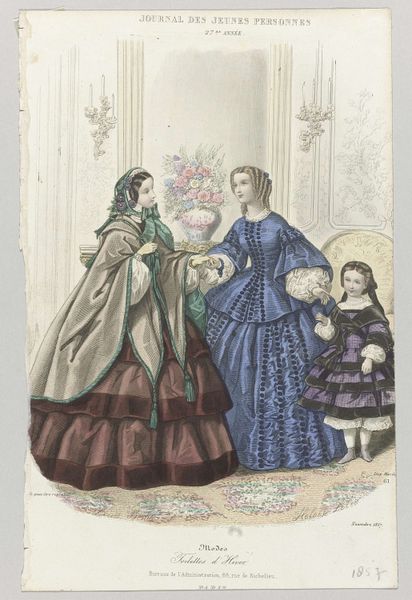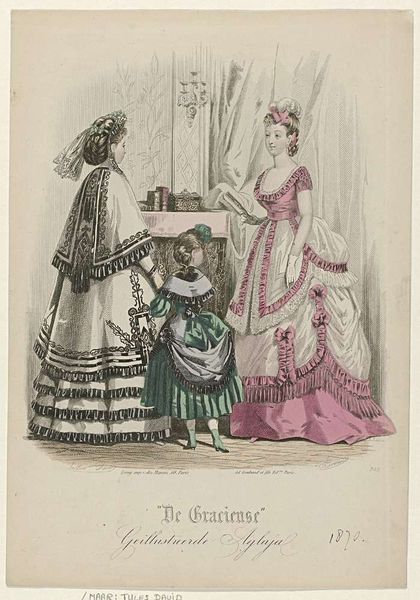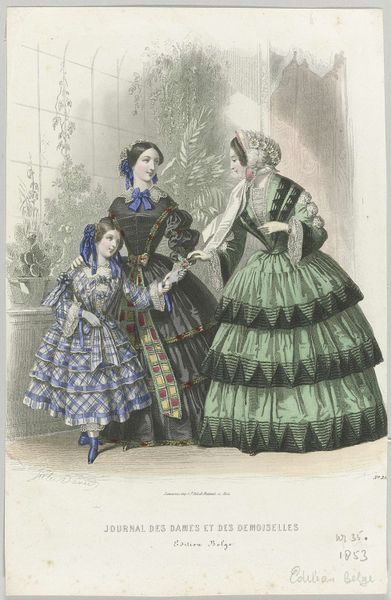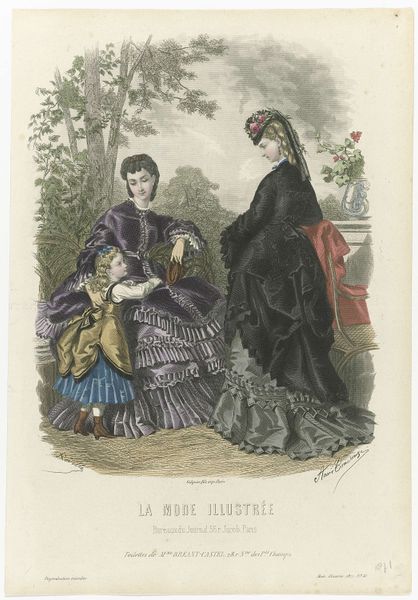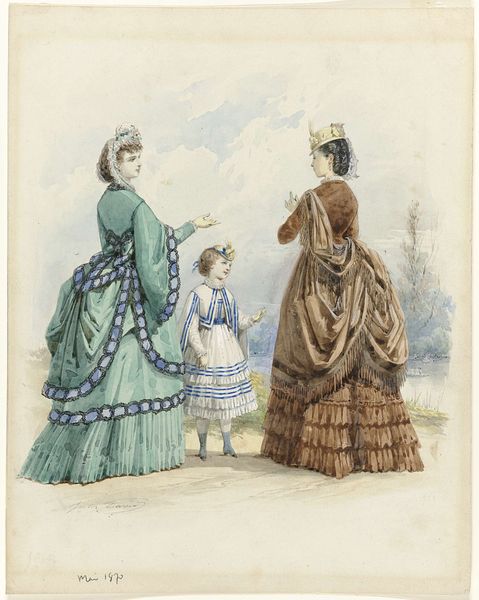
Dimensions: height 253 mm, width 162 mm
Copyright: Rijks Museum: Open Domain
Curator: Let’s explore this print entitled "Magasin des Demoiselles, 25 septembre 1852", dating from 1852. It's a lithograph, enhanced by engraving, a process involving the careful layering of ink to build up tone and color. What are your initial impressions? Editor: I'm immediately struck by the visual order—the way the subjects are staged in relation to each other and how the light flatters the luxurious, voluminous materials of their garments. It evokes a sense of restrained elegance. Curator: I see it more as an artifact embedded in a complex system. Consider the title—"Magasin des Demoiselles," or "The Ladies' Store." This wasn't simply a drawing but a piece of commercial propaganda disseminated to fuel the engine of the textile trade. Look at the detail of those fabrics, a catalogue of textures and patterns, reproduced using then cutting-edge engraving techniques for mass consumption. Editor: Yes, I understand the intention. But even within its context as marketing, the artistry is clear. The meticulous craftsmanship and delicate lines enhance its aesthetic value beyond mere advertising. See the balance achieved by positioning the dark dress on the right against the lighter one on the left? It draws your eye into a careful composition. Curator: Balance achieved by deploying labor, materials and commerce for very precise ends, as women and their associated visual aesthetics become products on offer. This print exists because of certain advancements and technologies that defined how information about textiles was disseminated. Who had access, what techniques were employed? These choices define meaning, not just formal arrangement. Editor: Still, dismissing it as pure commerce ignores the intentionality behind the art. Take the birds, carefully posed to lead the gaze to the child, unifying elements to generate meaning. It speaks of societal desires and ideals presented within structured artistic frameworks. Curator: Desires and ideals manufactured and circulated. If we pull at that thread, who had the capacity and the cultural access to acquire such materials and labor to begin with? Editor: I appreciate your emphasis on broader implications. While you shed light on socio-economic context, I still view "Magasin des Demoiselles" as a testament to careful design sensibilities prevalent even within what you rightly note were consumerist systems of representation. Curator: And I maintain we are reckoning not just with intentionality, but its genesis. It is an artifice born of industry and gendered expectations as well. Editor: It appears we both find distinct but intertwined virtues in it!
Comments
No comments
Be the first to comment and join the conversation on the ultimate creative platform.
